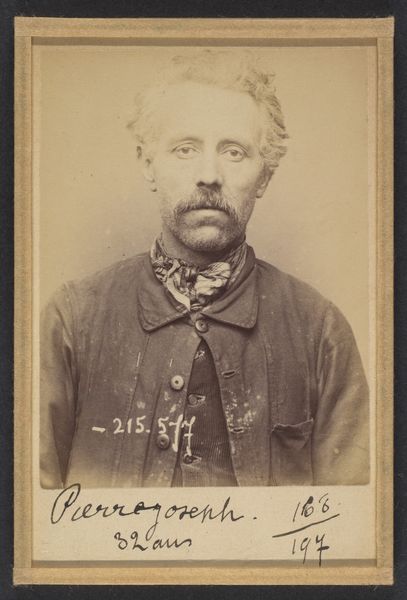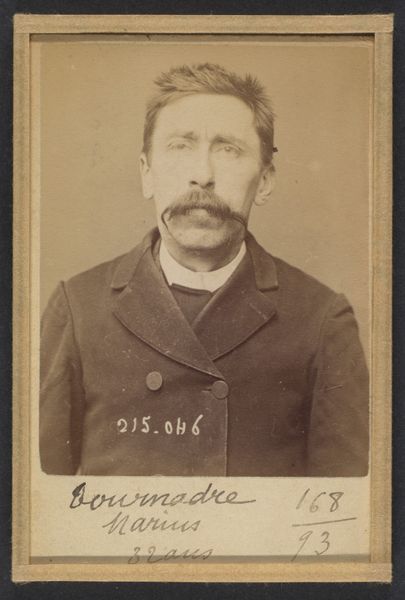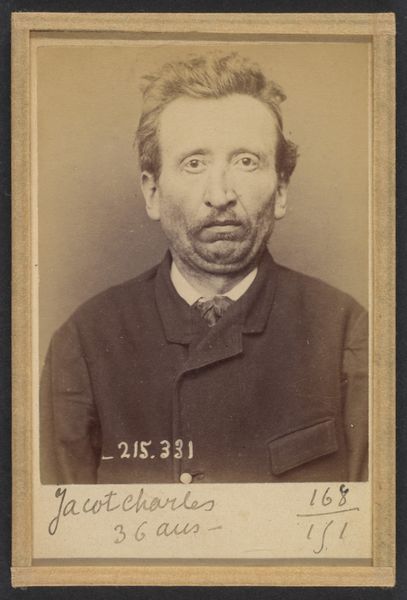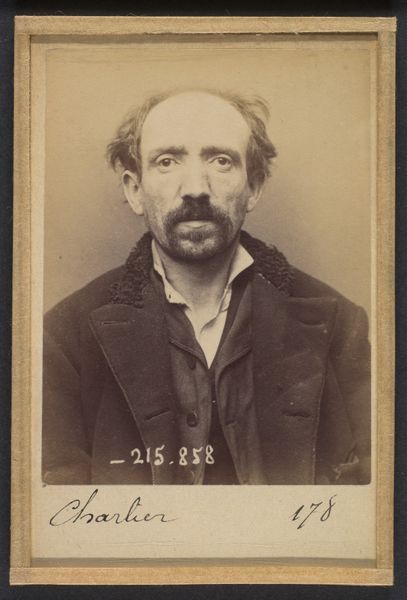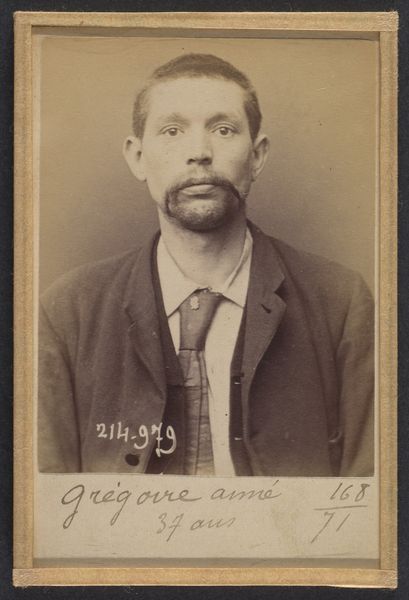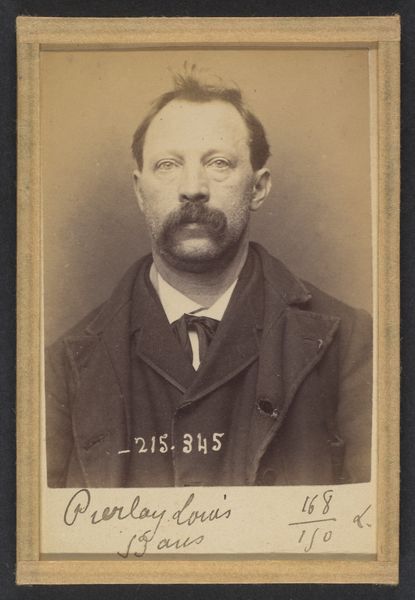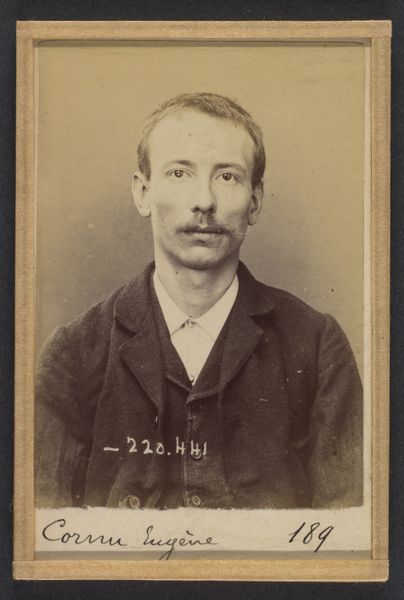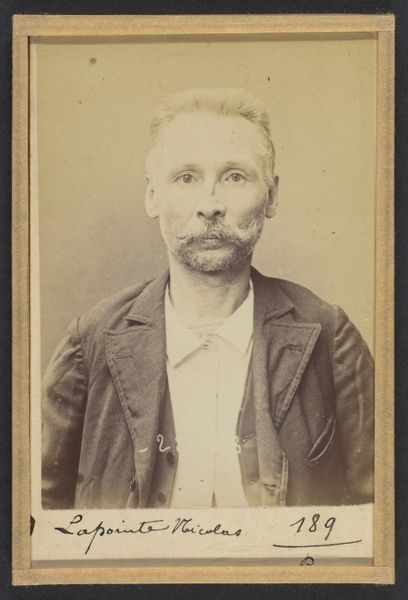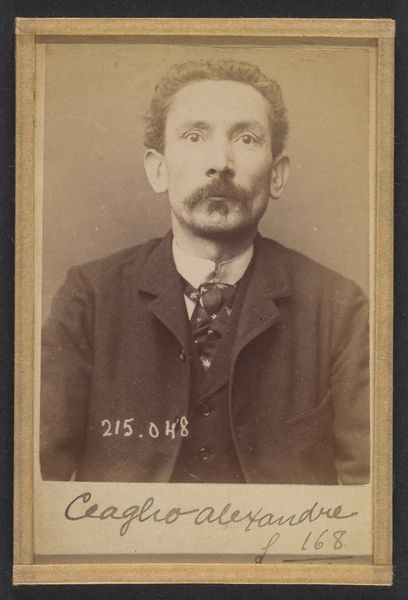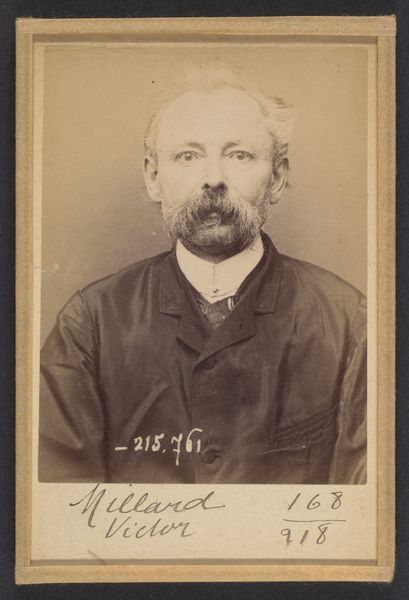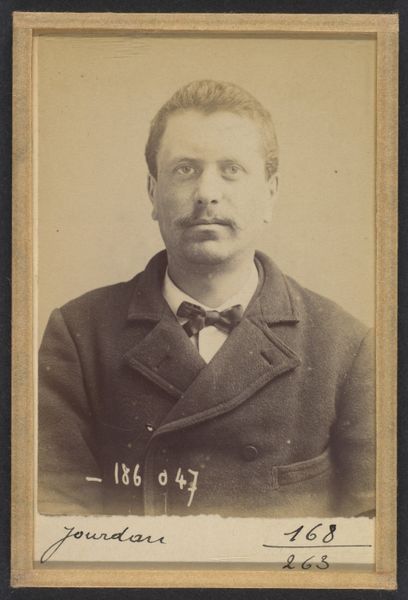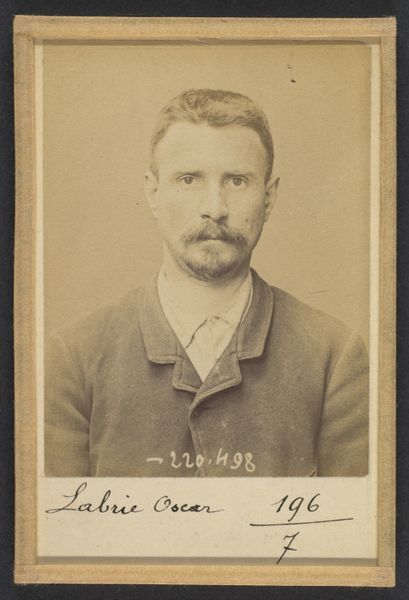
Pourry. François, Nicolas. 58 ans, né à Ars-sur-Moselle (Alsace-Lorraine). Ajusteur. Anarchiste. 3/7/94. 1894
0:00
0:00
photography, gelatin-silver-print
#
portrait
#
portrait
#
photography
#
gelatin-silver-print
#
realism
Dimensions: 10.5 x 7 x 0.5 cm (4 1/8 x 2 3/4 x 3/16 in.) each
Copyright: Public Domain
Curator: Before us is a gelatin-silver print taken in 1894 by Alphonse Bertillon. The piece is titled "Pourry. François, Nicolas. 58 ans, né à Ars-sur-Moselle (Alsace-Lorraine). Ajusteur. Anarchiste. 3/7/94." Editor: It's striking— the stark realism, almost confrontational. The tones are muted, giving it a somber feel, yet the gaze of the subject is surprisingly direct. It holds a tension, wouldn't you agree? Curator: Absolutely. Bertillon's approach here transcends mere documentation. The process, involving meticulously recording physical details alongside socio-political affiliations, aimed at standardizing criminal identification. Consider the materials too—the cheap paper stock speaks volumes about the subject's social standing, and how it reflects the political instability during the Belle Epoque. Editor: Interesting. From a formal standpoint, the composition is deliberately rigid, dividing the space with this centered figure—the direct lighting emphasizing every line and hollow of his face. Notice how the slightly desaturated gelatin silver process further strips any sense of romanticism, emphasizing pure observation. Curator: Precisely. And observe the details provided below the image, written and typed. These inscriptions were key, linking physical characteristics to the subject's profile, making him legible within a larger system. 'Anarchist' stamped next to his occupation offers a crucial window into the climate of the period and this man’s lived experiences of exploitation. Editor: It's that intersection between the objectivity of the medium and the charged information surrounding the subject that gives the piece its power. The lines on his face tell a different story from the neat handwriting underneath it, however they’re bound by composition. Curator: Ultimately, Bertillon's photograph unveils complex socio-political undertones inherent in what might first appear a neutral portrait. The way his profession, region and political affiliation are treated as a kind of criminal data helps me understand more about the rise of policing during the fin de siecle period. Editor: It makes us think about the inherent power structures present in seemingly simple representation. The tension in his face—perhaps it knows exactly the kind of judgement and systems to which his picture will consign him.
Comments
No comments
Be the first to comment and join the conversation on the ultimate creative platform.
